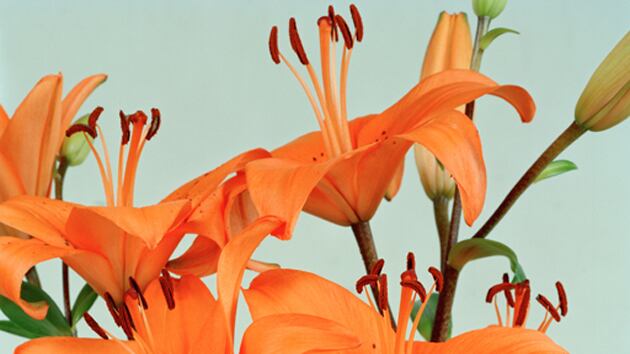If it’s dusk, and the sun is slipping below a broken timberline in a haze of pastels—Ann Woo will refuse to take a picture. It’s a moment asking to be snapped by any photographer, but Woo would call that greedy.
Instead she will turn to the stone at her feet, or perhaps, as displayed in her most well-known work, a small portion of the color-struck sky. In her Sunset series, Woo singles out individual hues and their subtle gradients. “Sunset Blue,” “Sunset Purple,” “Sunset Yellow,” “Sunset Cyan,” and so on lose their context, appearing more like samples from Frankenthaler’s palette.
This is exactly what Woo wants you to see—the image itself, isolated from political, social, emotional, or narrative intentions. Her art is one of avoidance. She steers clear of visual statements, the obviously or impersonally beautiful, and photo manipulations. This infuses her work with a kind of grace and humility. “The point is to let people see what I saw,” she says on a recent day at a Brooklyn coffee shop.
Woo’s approach is captivating. Self-taught before attending New York’s International Center of Photography in 2008, she picked up her first camera while at design school in her native Hong Kong. In recent years, the 36-year-old has been featured in 17 shows internationally, including Now: Art in the 21st Century at Phillips de Pury & Company in New York, the NADA Art Fair in Miami, and Art Basel in Switzerland. Next year her work will be featured in an exhibition at the Museum of Chinese in America.

Many of her pieces are labeled as minimalist: photos of a single pattern-backed playing card, a melting block of snow, a wad of crinkled paper, and undemonstrative portraits.
Woo insists her approach is even simpler than that. “I photograph what I like seeing, what I am attracted to, what I am passionate about,” she says. “So when I am photographing something it has to be true. I cannot make up something beautiful.”
This means no digital photography. Woo is an analog photographer, one of the few who have yet to dip into the digital world, instead choosing to print each photo by hand in the increasingly disappearing darkroom. For Woo, printing by hand limits the temptation to meddle with reality, allowing her work to appear closer to the original image, a quality she feels is her “responsibility.” “If I didn’t capture truth it would be lying,” she says. “I would not let myself lie.”
When asked why she holds truth as more important than her impulse to create, Woo finds herself at a loss. Later, a discussion of her childhood lends insight into her development. She grew up in 60-square-foot room with her mother, father, and younger sister. “We sat on our beds to have dinner,” she says. She worried often, and knew money was scarce. “I have a sensitivity towards reality,” she says. “I cannot cover it up. People learn how to cover things, how to block out pain, but I cannot do that. I need to know truth.”
For a girl growing up in Hong Kong 15 years ago, being an artist was a farfetched notion. Woo was the first in her family to attend college, eschewing a career in finance for one in design. “In the past I would have never imagined doing art,” she says. “I became a designer because it is something closer to a career. Art is equal to being poor.” The Hong Kong art scene is a relatively new market, with local artists emerging from their underground beginnings in the last decade or so. Fearing disdain, Woo is still hesitant to tell people she has a college degree and is a photographer. For years she wouldn’t show her work to others, much less sell it.
Even today, as a working artist with upcoming exhibitions, she can’t stop worrying. The brutal reality of being a struggling artist continues to threaten her world of pretty pictures, and she admits that sometimes she’s “scared of surviving.”
“Art is a luxury,” she says. There will always be bills to pay, and, luckily, her once beloved pastime has become a means of provision. The tilt of orange lilies in a vase or the diamond patterns of playing cards are now subject to the critical eye of the art world. But still, Woo reminds us of the sweetness of life’s diversity. That reality will always have its scraps of beauty, even if it’s as passing as a hue in a sunset.






